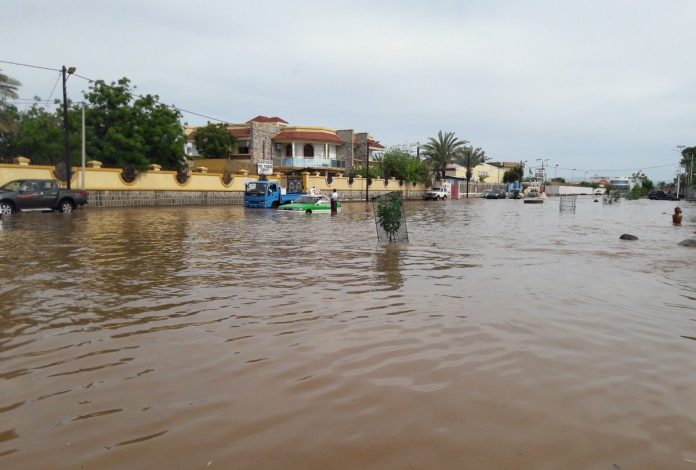Local authorities and humanitarian partners are moving to rapidly mobilize resources to assist affected populations with available resources. Response will be formulated as more information is gathered and communication and access improves in areas hardest hit by the storm.
In Somaliland which was worst hit, the government, through the National Disaster Council, met with humanitarian partners on 20 May to assess the situation and plan the response. Detailed assessments will commence on 21 May in the Lughaya district, one of the most heavily-affected areas in Awdal region. Authorities are working with humanitarian partners to provide food, shelter, non-food items, hygiene kits, and WASH and health services. More assistance has been pledged and includes the following;
• Care International will assist with WASH services, unconditional cash transfers and non-food items;
• OIC and WFP will provide food assistance;
• German Agro Action will provide non-food items, medicines and food assistance;
• UNHCR will assist with non-food items;
• The Norwegian Refugee Council have pledged unconditional cash transfers;
• World Vision will assist with non-food items, unconditional cash transfers and WASH and health services;
• The Danish Refugee Council will provide WASH services and unconditional cash transfers;
• FAO will support in agriculture, fisheries and livestock;
• Save the Children are providing logistical support, WASH, health services and unconditional cash transfers;
• UNDP will support the repair of water sources and livelihoods (fisheries)
• and UNICEF will assist with non-food items, WASH and health services.
The overall response in the affected areas remains predicated on sufficient resources. As the HRP 2018 remains significantly under-funded, shortfalls are expected unless additional resources are made available.
Situation Overview
On 19 May, the tropical cyclone Sagar, which had formed in the Gulf of Aden – between Yemen and Somalia made landfall in north-western Somaliland and Djibouti three days after it formed. Heavy rainfall, strong winds and dangerous flash floods that hit coastal areas of Puntland and Somaliland resulted in the loss of lives, crops and livestock as well as the destruction of property and infrastructure. In Somaliland, the largest concentration of fatalities were reported in coastal Galbeed and Awdal, where the cyclone made landfall. Houses were destroyed, and livestock washed away. The heavy rains and subsequent flooding are hindering humanitarians’ ability to access some of the areas affected by the cyclone to assess the extent of the damage and provide assistance. In Puntland, severe weather conditions also resulted in fatalities, livestock loss and the destruction of farms, property and infrastructure including fishing boats.
Authorities and humanitarians in the two states continue to assess the damage caused by the cyclone and provide response where possible. Meanwhile, forces from Puntland and Somaliland have been engaged in an armed standoff in Sool that had displaced almost 10,000 people prior to the cyclone’s arrival, further complicating an already complex humanitarian picture. By the morning of 20 May, meteorological authorities were reporting that Sagar was beginning to weaken into a tropical depression. The tropical depression itself has remained over parts of Ethiopia, Djibouti and north-west Somaliland, about 140 kilometres from Hargeisa.
Humanitarian impact and needs
Tens of thousands of people have been affected by flooding, displacement and the destruction of infrastructure in Sagar’s wake. Due to the dispute over the regions of Sool and Sanaag and lack of access to some affected areas after the destruction of roads, the situation of affected populations and impediments caused by blocked roads and failed communications, the extent of the damage is yet to be fully confirmed. In addition, the cyclone has worsened the humanitarian situation in the two states and disputed regions, which have experienced protracted drought dating back to 2015, leaving them particularly prone to flash flooding in the direct aftermath of massive downpours.
In Somaliland, according to the disaster management authority NADFOR, an estimated 1,780 families were displaced, and at least 80 families lost their homes. In Galbeed and Awdal, the cyclone left 16 people dead, and many more injured. Property, infrastructure and livestock were lost, but the full extent is still to be known once access improves. According to local authorities, scores of fishing boats went missing in the region. Reports also suggest that about 40 fishermen were at sea before the cyclone alert was announced and their fate is unknown.
In Puntland, authorities in Bari region report the loss of livestock and the destruction of property and infrastructure, including buildings and fishing boats. In Qardho, heavy rainfall caused flash flooding in the town’s IDP settlement, destroying at least 30 community latrines and leaving many others damaged. The flooding will likely increase health risks in the region. In Iskushuban, flash flooding has caused devastation of farm land. The tarmac road that connects Bossaso and Garowe, among others, was inundated, leaving major centres, as well as many rural areas in the region and into Sanaag inaccessible.




























